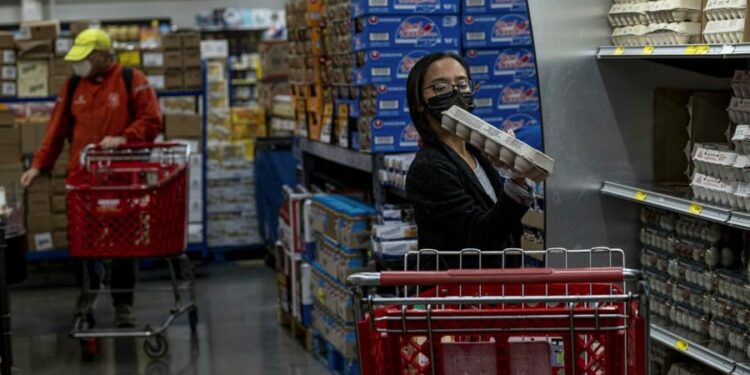Wall Street stocks dropped and short-dated Treasury bonds sold off on Wednesday after a hotter than expected US inflation reading fuelled expectations of aggressive Federal Reserve rate rises.
The broad-based S&P 500 index fell 1.4 per cent in early dealings and the technology-focused Nasdaq Composite dropped 1.8 per cent. The S&P has lost more than 20 per cent so far this year as investors calculate the effect of higher borrowing costs on companies’ valuations.
The annual rate of US consumer price inflation hit 9.1 per cent last month, data on Wednesday showed, exceeding consensus estimates for an 8.8 per cent increase. The month-on-month increase was 1.3 per cent, up from 1 per cent in May.
A surprisingly high inflation print for May had increased pressure on the Fed to raise its benchmark interest rate by an extra-large 0.75 percentage points in June, its most since 1994.
The US central bank’s main policy rate sits in a target range of 1.5 per cent to 1.75 per cent at present. After the inflation reading, futures markets reflected upgraded expectations of where the rate will peak, now pricing in a high point of almost 3.6 per cent in February.
“The acceleration of the monetary cycle is not yet behind us, and we will have to wait until 2023 to see the Fed consider a pause,” said Florian Ielpo, head of macro at Lombard Odier Investment Managers.
But Marco Pirondini, head of US equities at Amundi, said that inflation was likely to peak over the summer, following recent falls in oil and commodity prices in response to signs of an economic slowdown.
“Towards the end of the year, inflation numbers will start to look a lot better than now, so [the Fed] will have more space to balance inflation and growth,” he said.
In government bond markets, the yield on the benchmark 10-year US Treasury note rose 0.05 percentage points to 3.01 per cent as the prospect of sustained inflation reduced demand for the fixed interest-paying asset. Bond yields rise as their prices fall.
The two-year Treasury yield, which tracks interest rate expectations, jumped 0.12 percentage points to 3.17 per cent, reflecting a so-called inverted yield curve pattern that has historically preceded recessions.
In currencies, the euro dropped briefly below parity with the dollar for the first time in two decades. The dollar index, which measures the US currency against six others, added 0.2 per cent, remaining close to a two-decade high.
Recent downbeat manufacturing and consumer surveys have prompted economists to warn of a looming US recession, although fears of a slowdown are more intense in Europe, where governments are facing up to the prospect of Russia cutting gas supplies.
The Stoxx Europe 600 share index — which has fallen 16 per cent so far this year in a broad global stock downturn driven by big central banks raising interest rates — built on losses from earlier in the session to trade 1.4 per cent lower after the inflation data. London’s FTSE 100 fell 1 per cent.
Brent crude, the oil benchmark, dropped 0.6 per cent to $98.81 a barrel on Wednesday, having slumped in the previous session as threats of new coronavirus lockdowns in China overshadowed supply fears driven by western sanctions against major producer Russia.











